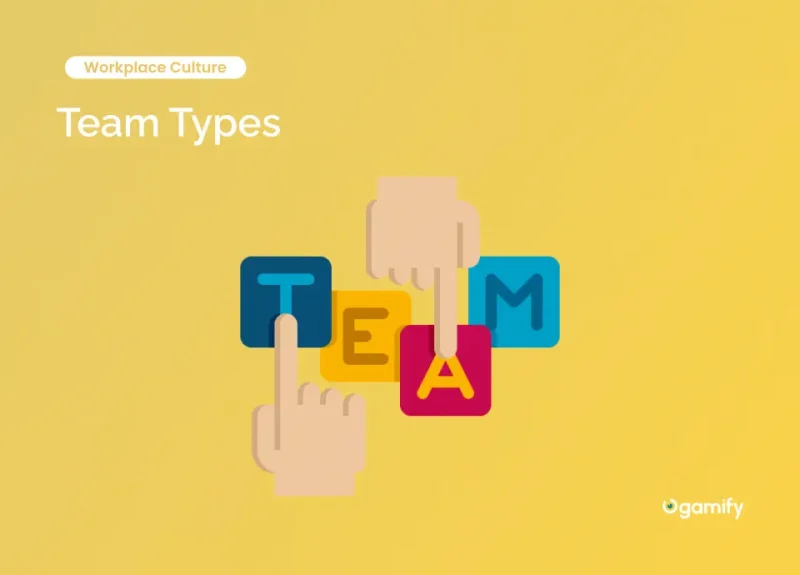Effective cooperation is essential for every organization’s success in today’s dynamic and fast-paced work environments. The accomplishment of common objectives, the promotion of innovation, and the improvement of workplace culture all depend on teams. But not every team is made equally. There are various team kinds, each with a distinct structure, management approach, and goal. The characteristics of 10 different team kinds that are frequently encountered at work, as well as how they contribute to organizational success, will all be covered in this essay.

The Importance of Teamwork in the Workplace
Let’s focus on the importance of teamwork in the workplace before exploring the various team kinds. Increased productivity, innovation, and employee happiness can result from effective collaboration between people with different backgrounds, viewpoints, and talents. A cohesive team can overcome difficult obstacles, come up with innovative solutions, and aid one another in achieving common objectives.

Types of Teams
The Hierarchical Team
The hierarchical team is the traditional form of team structure commonly found in large organizations. In this team type, authority and decision-making power flow from the top down. Managers assign tasks, set goals, and oversee the team’s performance. Communication channels are formal, and team members follow a clear chain of command.
The Cross-Functional Team
Cross-functional teams bring together individuals from different departments or areas of expertise to collaborate on a specific project or objective. This team type allows for a diverse range of skills, knowledge, and perspectives, fostering innovation and comprehensive problem-solving. Members of cross-functional teams often have different reporting lines and work together temporarily to achieve a shared goal.

The Virtual Team
With the rise of remote work and globalization, virtual teams have become increasingly prevalent. Virtual teams are made up of people who cooperate while working remotely and rely on technology for communication and teamwork. This kind of team allows for cross-time zone collaboration, flexibility, and access to a variety of talent pools. Effective communication and trust-building are crucial for virtual teams to overcome the challenges of physical separation.
The Self-Directed Team
Self-directed teams are characterized by a high level of autonomy and empowerment. In this team type, members have the authority to make decisions and manage their work processes. Self-directed teams exhibit accountability for their results, high levels of motivation, and a strong sense of ownership. This collaborative structure fosters innovation, problem-solving, and ongoing development.

The Project Team
To finish a certain project within a predetermined timeline, project teams are formed. These teams are made up of people with the complementary knowledge and abilities needed to accomplish the goals of the project. Project teams are formed, operate outside of the official organizational structure, and disband after the project is finished. The success of project teams depends on effective project management and transparent communication.
The Creative Team
Innovative concepts, brand-new goods, and effective marketing strategies are all the work of creative teams. These teams perform best in a setting that values innovation, risk-taking, and creative problem-solving. Organizations may leverage the potential of their creative teams to promote innovation and stay ahead of the competition by establishing a creative culture and providing the appropriate tools.

The Support Team
Support teams play a crucial role in providing assistance and resources to other departments or teams within an organization. These teams could have members from the administrative, financial, human resources, or IT departments. Support teams’ main duties include ensuring efficient operations, resolving problems, and providing knowledge in their specialized fields.
The Customer-Facing Team
Customer-facing teams are at the forefront of organizations’ interactions with their clients or customers. These teams include sales representatives, customer service agents, and account managers. Customer-facing teams are in charge of establishing and preserving trusting bonds with clients, attending to their needs, and offering first-rate service. They serve as the company’s public face and are essential to retaining and gaining new clients.

The Continuous Improvement Team
Continuous improvement teams focus on enhancing processes, eliminating inefficiencies, and driving innovation within an organization. These teams employ methodologies such as Lean Six Sigma or Agile to identify areas for improvement, implement changes, and monitor outcomes. By continuously striving for excellence, continuous improvement teams contribute to increased productivity, quality, and organizational success.
The Leadership Team
Top executives and senior managers make up the leadership team, which is in charge of determining the strategic direction of the company and taking important decisions. This kind of team makes sure that the organization’s vision and daily operations are in sync. Leadership teams possess a holistic view of the organization, provide guidance to other teams, and drive overall performance.
Conclusion
In today’s diverse and rapidly evolving workplaces, various team types contribute to organizational success. Each team type has its unique structure, management style, and purpose, catering to different organizational needs and objectives. By understanding the characteristics and benefits of different team types, organizations can optimize collaboration, promote innovation, and create a positive workplace culture.
FAQ
What is the role of teamwork in the workplace?
Teamwork plays a vital role in the workplace by promoting collaboration, enhancing productivity, and fostering innovation. It allows individuals to pool their skills and knowledge to achieve common goals.
How can leaders build effective teams?
Leaders can build effective teams by clearly defining goals, establishing open communication channels, fostering trust and respect among team members, and providing necessary resources and support.
What are the key challenges faced by virtual teams?
Virtual teams face challenges such as communication barriers, lack of face-to-face interaction, potential time zone differences, and difficulties in building trust and rapport among team members.
How can functional teams improve cross-departmental collaboration?
Functional teams can improve cross-departmental collaboration by promoting knowledge sharing, facilitating regular communication and feedback, and encouraging cross-training and job rotation to broaden understanding and perspectives.
What are the advantages of self-directed teams?
Self-directed teams offer advantages such as increased motivation and accountability, faster decision-making, flexibility in work processes, and a sense of ownership among team members.

